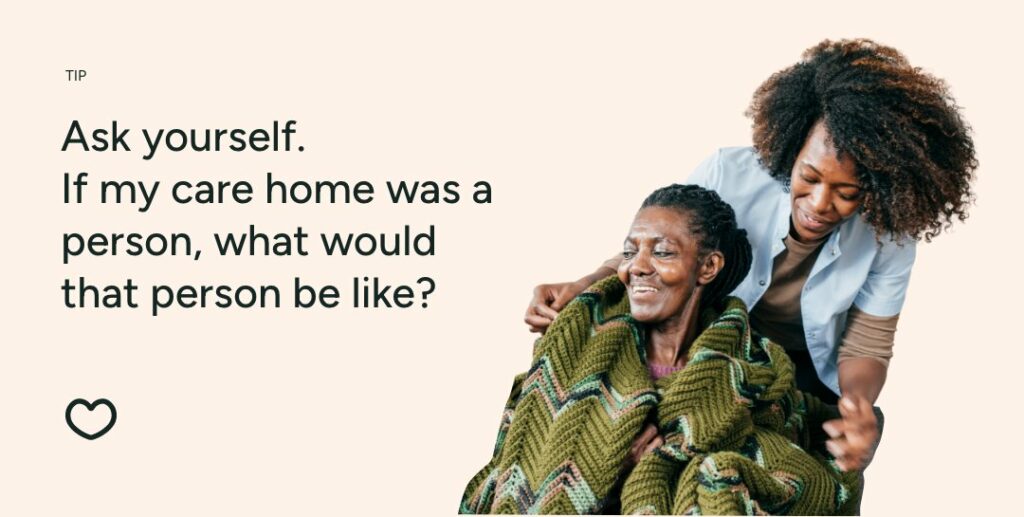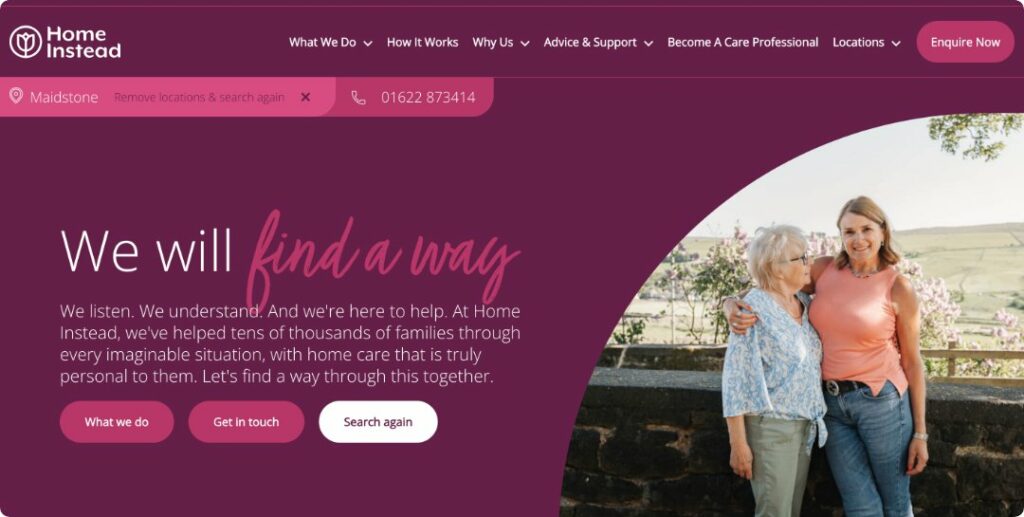In the fast-paced world of care homes and home care agencies, where the demand for distinctive quality care services is ever-increasing, one phenomenon has quietly crept into the industry, and its effects can be profound: “Blanding” in Care Homes.
The term Blanding refers to the unfortunate trend of generic, indistinct branding that leaves care homes and home care agencies virtually indistinguishable from their competitors. In an industry where trust, credibility, and differentiation are paramount, falling into the Blanding trap can be detrimental.
Understanding the Blanding in Care Homes Phenomenon
Blanding occurs when care homes and home care agencies opt for bland, forgettable branding that fails to convey their unique identity, values, and strengths. It’s akin to fading into the background, losing the ability to capture prospective residents and their families’ attention and trust.
It’s not just the visual branding of a Care business, though; this also seeps into the verbal characteristics: How your team answer the phone, how you show people around your home or the initial care assessment. How are you standing out?
Another prime example is a vanilla and bland vision – yes, we know you care, we know you are compassionate and treat residents with dignity – but is there anything else to your operation? A sense of fun? Of adventure? Or giving your residents and service users the time of their lives?
Reasons why Blanding is happening in Care
Many care operators are pushed for time and need a marketing function. The day-to-day operations take precedence, and branding and marketing are often at the back of operators’ minds. With this comes many care operators using poor-quality design and branding services. Websites such as Fiverr are used, a directory of online and quick creators of logos (often simple templates, with a name and colour change) for very low prices.
A care home brand is not just the logo – it should start with your story, point of difference, and values. With this piece of work undertaken, it is then so much easier for designers or branding identity specialists to create something unique and fresh.
The Care Home and Home Care Industry Landscape
The care home and home care industry have witnessed significant growth, accompanied by fierce competition. With many options available, prospective residents and their families are discerning in their choices, seeking care providers who meet their needs and resonate with their values.
The Consequences of Blanding
Blanding in Care Homes can erode trust and credibility, leaving prospective residents and their families wary of your care services. Additionally, it may hinder your ability to attract and retain quality staff who are drawn to organisations with a strong and compelling identity.
“Care organisations risk all looking and saying the same things. They risk being lost in a sea of sameness. But buying care is an emotional purchase. Care Homes and Home Care need to stop trying to be everyone else. Care makes a real difference to people’s lives, so why not be the difference?”
Baz Jobson – Care Brand Specialist at Bare Studio.
Avoiding the Blanding Trap: Strategies for Unique Branding
Crafting a unique brand identity is the key to preventing the Blanding trap. Care homes and home care agencies must identify their unique selling propositions, tell their story, and emphasise their core values to create a memorable brand. The goal is to stand out in a crowded marketplace by offering something truly distinct. Don’t just create your vision based entirely on what you think the CQC want to hear – you have to strive to push your brand, to a deeper level.

A good, quick exercise that can work really well is to ask yourself this question…
If my care home was a person, what would that person be like.
Think about the personality, the characteristics. Is it based on somebody you already know? Someone of note who has some infamy?

Another tip is to not focus on the care sector.
Is there a brand in a completely different sector, that you aspire to? They have the values, the look and the voice that you think could help you define yourself as different in the marketplace?
Case Studies: Success Stories in Unique Branding
To illustrate the power of unique branding, consider the success stories of care homes and home care agencies that have excelled in this area. Home Instead have achieved some wonderful things with their brand and the tone of voice. Reading any page of their website, or literature you instantly feel like they get the challenges being faced by families and their loved ones, they want to help first and foremost – and that they are warm and experienced.

Their imagery is professional, showing genuine warm moments between service-users and carers.
Their innovative approaches and commitment to distinct branding have set them apart from competitors and earned them the trust and loyalty of their target audience.
The Role of Consistency in Unique Branding
Consistency is key in unique branding. A strong brand identity should permeate every aspect of your business, from your website and social media presence to your physical facilities and staff interactions. Maintaining this consistency ensures that your brand is easily recognisable and memorable.
Conclusion
In conclusion, the Blanding in Care Homes phenomenon threatens the care home and home care lead generation in a highly competitive environment.
Care home owners and marketing managers must recognise the importance of unique branding in building trust, credibility, and differentiation – as well as how it will aid and support your CQC reviews.
A solid and distinctive brand is your most valuable asset in an industry where personal connections and trust are paramount.
By avoiding the Blanding trap and investing in unique branding, you can position your care home or home care agency for long-term success in a competitive landscape.
Need help with a brand strategy and identity that will help you stand out? Check out our branding strategy and identity workshop.
Subscribe to our newsletter
A monthly newsletter with tips and tricks for care home operators to find new residents and new team members.